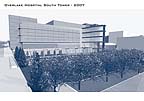
The hospital admits a mistake was made when, during a follow-up surgical procedure to put a nutrition tube into the baby’s neck, a cautery device ignited a piece of gauze and sparked a fire.
This tragic story illustrates just one of the many hazards in surgical units that are associated with the use of high-frequency, electrically powered equipment, which can have a dramatic affect on patients and staff. Some of these potential hazards include interference with implanted equipment, accidental contact with a practitioner or the patient resulting in burns or electrical shock, explosions, or fires. This article will specifically focus on the potential explosion or fire risks related to electrical surgical units (ESUs). However, many of the recommended safety precautions in this article also will apply to other potential exposures.

Risk is great
The number of fires that occur each year in a surgical setting, such as hospitals and ambulatory care centers, as a percentage of the total number of surgical procedures performed in the United States is extremely low. However, the risk merits the inclusion of surgical fire reduction into JCAHO’s (Joint Commission on Accreditation of Healthcare Organizations) national patient safety goals.The reality is that the presence of a heat source combined with intensified oxygen concentrations and the likely presence of flammable vapors (skin preparation solutions and metabolic gases) in direct proximity to an incapacitated patient present a particularly significant level of potential risk. Surgical fires that occur proximal to the patient’s face often also involve the airway itself. In seconds, a life-threatening situation can arise with little or no time to react. For these reasons, efforts towards fire prevention must receive primary consideration, followed by effective response procedures in the event of unanticipated incidents.
Electrical safety features
It is recommended that every surgical suite have an electrical safety program to prevent one of these life-threatening situations. When developing a program to promote the safe use of electrosurgical units, the following strategies are recommended:
EVALUATE EQUIPMENT PURCHASES CAREFULLY AND COMPLETELY. Select equipment based on compatibility with specific organizational needs. Involve representatives of the medical staff, nursing staff, and materials management, biomedical and engineering services in this process. Assure that the equipment to be purchased will function effectively in the clinical setting and can be fully serviceable.
OPERATE ELECTROSURGICAL UNITS IN ACCORDANCE WITH THE MANUFACTURERS’ SPECIFICATIONS. Obtain a complete set of operating manuals for each type of device. Develop and attach the manufacturer’s operating instructions to each unit.
REQUIRE THAT A FACTORY-AUTHORIZED REPRESENTATIVE PROVIDE ADVANCE TRAINING TO CLINICAL, BIOMEDICAL AND SERVICE PERSONNEL PRIOR TO PLACING ANY NEW EQUIPMENT INTO SERVICE. Ensure that such training extends to part-time and/or off-shift staff members. Maintain detailed records of such training sessions.
Solid guidelines
Within this advance training, establish operational guidelines for the use of each type of device. Address the following aspects:The pertinent clinical applications, procedures, contraindications or specific precautions;
Preventive maintenance schedules and procedures;
Device cleaning and pre-operative inspection or checkout procedures;
Inspection schedules, testing or re-calibration requirements and methodologies;
Training and certification requirements;
Emergency response procedures in the event of an untoward incident.
TRAIN ALL PERSONNEL IN ACCORDANCE WITH THE OPERATING GUIDELINES. This includes all medical staff using or assisting with operations utilizing electrosurgical units. Staff who clean or protect the devices also need to know how to identify if a device is intact and operational.
DEVELOP A PREOPERATIVE “DEVICE CHECK-OUT” PROCEDURE (AND LIST). Assign accountability for performing that clearance procedure in order to verify that key precautionary settings or actions are in compliance with established guidelines. Include documentation concerning satisfactory completion of that checkout process in each patient’s medical record.
SELECT AND INSTALL APPROPRIATE EMERGENCY RESPONSE EQUIPMENT IN EACH SURGICAL AREA. This should include one or more fire extinguishers of a suitable type in each operating room. These extinguishers must be installed so the staff have unobstructed access during an emergency.
WHEN SELECTING A FIRE EXTINGUISHER, CONSIDER THE TYPE. Each form of extinguisher discharge will have a different effect on controlling the fire, the patient and the operating environment. For example, dry chemical extinguishers are effective, but produce a large amount of residue that could contaminate the entire surgical suite. Carbon dioxide and other clean agent extinguishers do not produce a residue, but can cause thermal shock, static discharge and respiratory complications. They also have little or no rating to extinguish Class A fires (ordinary combustibles).
A water mist extinguisher can be used in this environment. Such extinguishers should possesses a Class A and Class C (2A:C) rating, making them suitable for use on ordinary combustibles and fires involving energized electrical equipment. A fine spray from the misting nozzle can provide safety from electrical shock, enhance cooling and soaking characteristics of the agent, and reduce scattering of the burning materials.

Standards and guidelines
The Association of peri-Operative Registered Nurses (AORN) issued its Recommended Practices for Electrosurgery1 in 1998 and retains them in their 2004 standards. The current NFPA 99: Standard for Health Care Facilities2 contains an annex entitled, “The Safe Use of High-Frequency Electricity in Health Care Facilities”3. It is noted therein, however, that the “annex is not a part of the requirements of this NFPA document, but is included for informational purposes only.”Although they are not official standards, the recommendations outlined in this NFPA document provide an excellent resource for developing an effective Electrosurgical Fire Safety Program. The laser safety standards cited below also provide prudent safety guidelines for inclusion in a surgical department’s fire safety program.
Although the probability of a fire occurring in a surgical suite is remote, the level of injury to a surgical patient involved in such a fire can be catastrophic. v
References
1. “Recommended Practices for Electrosurgery,” The Association of peri-Operative Registered Nurses (AORN), 2004.
2. NFPA 99: Standard for Health Care Facilities, National Fire Protection Association, (NFPA) 2002.
3. The Safe Use of High-Frequency Electricity in Health Care Facilities, Annex D NFPA 99: Standard for Health Care Facilities, National Fire Protection Association, (NFPA) 2002.
Other Suggested Resources
NFPA 99: Annex D: The Safe Use of High Frequency Electricity in Health Care FacilitiesNFPA 53: Recommended Practices on Materials, Equipment and systems Used in Oxygen Enriched Atmospheres
NFPA 115: Recommended Practices on Laser Fire Protection
NFPA: www.nfpa.org
ANSIZ136.3: Safe Use of Lasers in Health Care Facilities
ANSI: www.ansi.org
AORN: Standards, Recommended Practices and Guidelines – Recommended Practices for Electrosurgery, 2004
AORN: www.aorn.org
Sidebar: National Patient Safety Goal
Goal: Reduce the risk of surgical fires.
Requirement: Educate staff, including operating licensed independent practitioners and anesthesia providers, on how to control heat sources and manage fuels, and establish guidelines to minimize oxygen concentration under drapes.
Sidebar: Sample Electrosurgical Fire Safety Program
(Development Checklist) An Electrosurgical Safety Program should contain at least the following:
I. Established clinical procedures and precautions including:
A. Use of a pre-operative equipment checklist
1. Delineated usage criteria
2. Accepted practices
3. Delineated operative responsibilities
4. Identification of specific higher risk procedures (i.e. facial and trachea)
B. Emergency procedures
II. Pre-purchase equipment evaluation process with involvement of:
A. Nursing staff
B. Medical staff
C. Biomedical services
D. Engineering services
E. Materials management
III. Requirement that a complete set of operating manuals be obtained
for all devices/units.
IV. Staff training and credentialing processes include:
A. Initial training of all clinical and biomedical personnel by a
factory-authorized representative.
B. Credentialing requirements of those members of the Medical Staff
requesting delineated clinical privileges for use of each specialized device
(e.g., Each type of laser, and each specific application for that laser.)
C. Skills competency validation procedure (initially and annually thereafter)
for affected staff.
D. On-going fire prevention awareness and response training.
V. Procedures for performing (and documenting):
A. Equipment cleaning,
B. Pre-operative inspections or “check-outs”
VI. Equipment maintenance program:
A. Initial inspection and testing requirements.
B. Established testing and inspection intervals.
C. Established procedures for inspection and testing of reusable
electrodes and cables,
D. Procedure for reporting suspected equipment defects, removing the
device from service, and obtaining a replacement, as indicated.
VII. Selection, placement and periodic inspections of fire safety equipment:
A. Fire extinguisher(s)
B. Fire alarm pull station(s)
Development and use of a pre-operative fire safety checklist.


